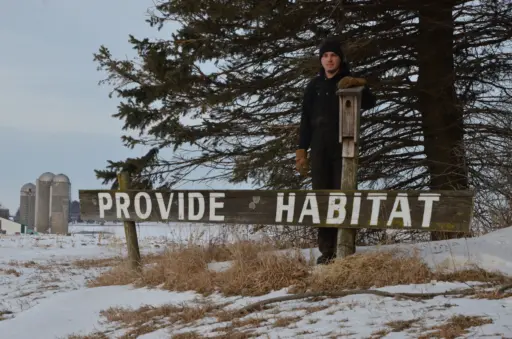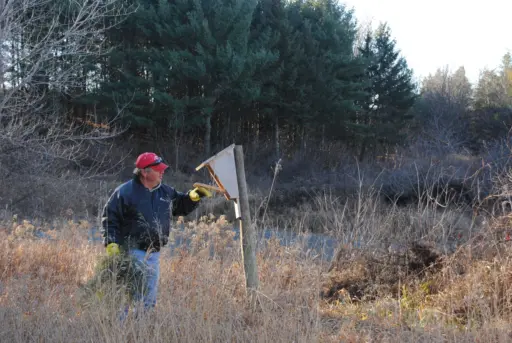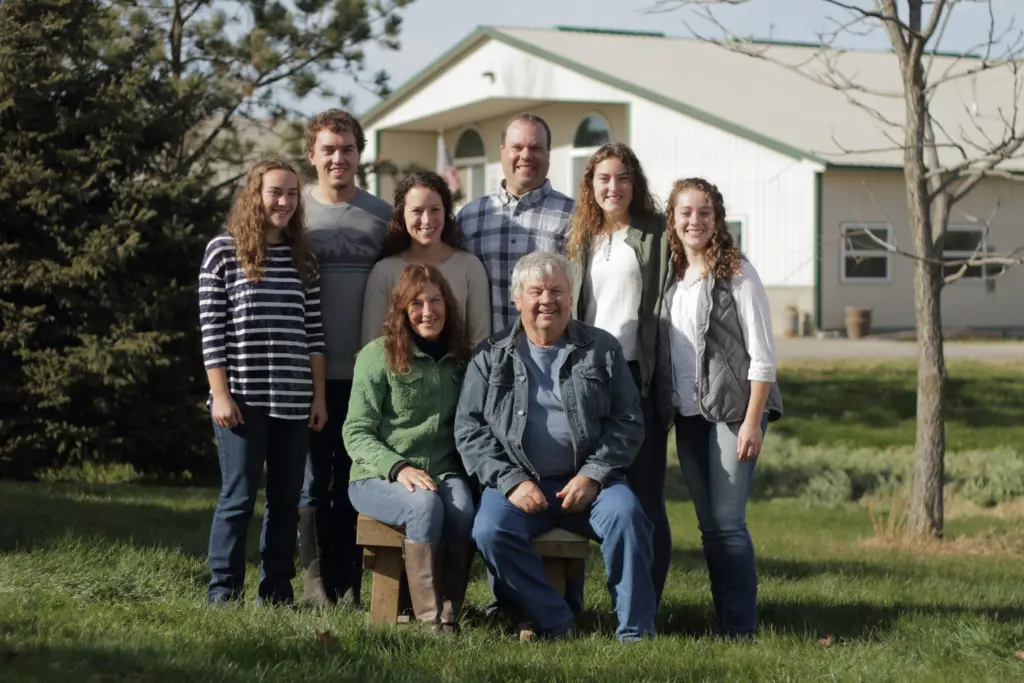Greden Farms in Altura, Minnesota, has been a family operation since 1866, currently owned and operated by fourth and fifth-generation family members Larry and Nancy Greden and their son and daughter-in-law, Ross and Vicky Greden. Ross and Vicky’s children, the sixth generation of the family, contribute to chores regularly in their own ways.
Since its beginning, the Greden Farm has included dairy animals. When Larry bought the farm from his dad in 1976, the family had 120 cows and 375 acres. Larry’s father had a deep love for the land and was an active board member for Winona County’s Soil and Water Conservation District. To continue his father’s sustainability legacy, one of Larry’s first things, when he took over the farm, was to plant 10,000 trees on the land. During his 45-year tenure, Larry planted more than 100,000 additional trees on the family farm. His actions led to Larry earning the 2011 Winona County Conservationist of the Year.
Larry’s son, Ross, joined the farm in 1995, the same year the family built the double-12 parallel milking parlor that is still in use today. As Ross took more responsibility for the farm, he became increasingly passionate about revitalizing upgrades to the dairy to prioritize cow comfort, animal health, energy efficiency, environmental sustainability, and high productivity.
A “Provide Habitat” sign has greeted everyone who enters the driveway at Greden Farms since 1976. With three generations working together, the Gredens continue their mission to provide habitat in the most sustainable way for every aspect of their operation, from their dairy herd, cropland and wildlife habitat woodland and prairie, to employees, family, and community.

The Gredens believe their dairy cows are the key component of their farm’s sustainability success.
“The crops that grow in the field are mostly indigestible to humans. The cows turn that into a highly digestible protein source and produce milk. Then we can return their natural fertilizer to the land to grow forage. This gives us something that is generating financial stability for our family. It is the ultimate cycle of sustainability,” Ross said.
Leaning into their sustainable mindset, the Gredens audit their facilities and procedures repeatedly to ensure their dairy farm uses the best practices. Changes in the last three years have included:
- Upgrading their milking parlor
- Overhauling their herd reproduction program
- Upgrading electrical wiring
- Updating calf vaccination programs
- Improving young calf feeding practices
The upkeep of their dairy farm allows them to care for the land sustainably, including their cropland, woodland, and prairie, which the family has maintained since the 1970s. Over the years, the Gredens have used government programs and their profits to keep the land on the karst topography – land that has a higher number of caves, sinkholes, and underground streams due to carbonate-rich limestone rock that easily dissolves – of their dairy in the middle of Winona County in the best shape for the betterment of the environment, surrounding community and future generations.
These changes have resulted in:
- More efficient milking time
- Higher production
- Fewer animal injuries
- Lower somatic cell count
- Higher pregnancy rate
- Reduced energy bill
- Healthier calves that reach weaning and first calving earlier
- An increase in crop yields
- Higher price on timber stand sales

With a 156-year history of Gredens living on the farm, the family knows the sensitivity of their land. The landscape is hilly with steep bluffs and valleys and erodible soil. Creeks and streams flow through portions of the Gredens’ land, including the Trout Valley Creek, which connects with a larger tributary, a popular fly-fishing area in southeast Minnesota. The topography in the region dictates how the Gredens manage the land – with both minimal tillage and no-till practices and precise nutrient management – and what type of crops they plant in order to prevent both erosion and run-off. Because of this, the Gredens rely on haylage to be one-third of the dry matter in the herd’s ration. While a less consistent forage than corn silage, alfalfa haylage is a great feed and a way to keep land intact. To the Gredens, animal agriculture with the use of alfalfa is essential in Winona County to keep the soil rich and reduce the chances for erosion.
As a family, the Gredens prioritize innovation while keeping environmental sustainability top of mind. “I want my grandchildren to run this operation someday if that is what they choose. I want them to be able to drink the water that is here. I care about this land. We live here,” Ross said.
